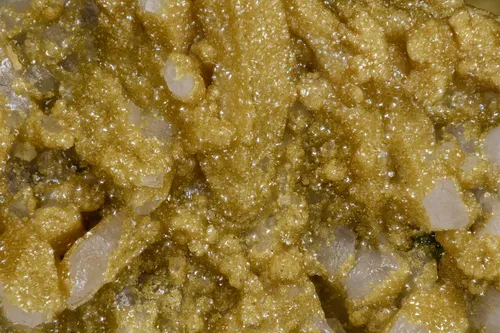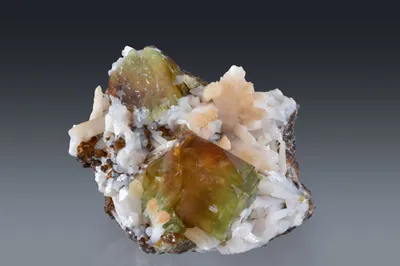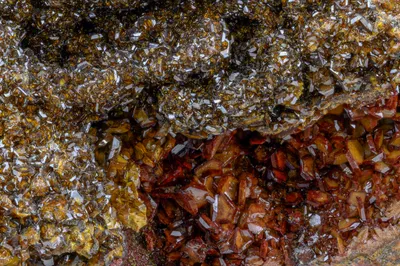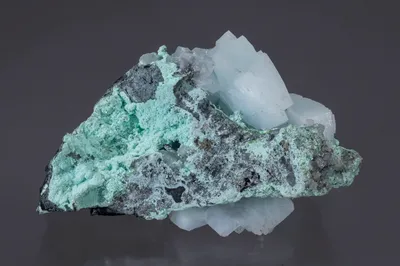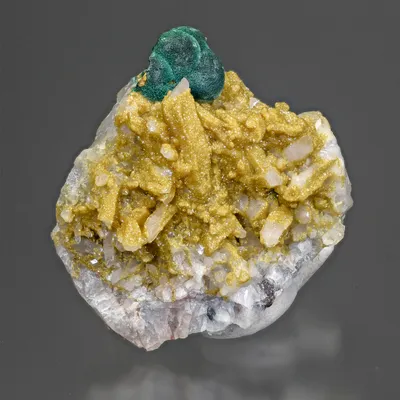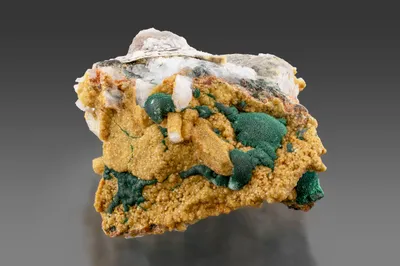
Image Credit: John Schneider
Mineral Species
hidalgoite
Type Locality
No
Composition
PbAl3(As0.5,S0.5,O4)2(OH)6
Crystal System
Trigonal
Status at Tsumeb
Confirmed
Abundance
Very rare
Distribution
First and second oxidation zones
Paragenesis
Supergene
Entry Number
Species; TSNB168
General Notes
Hidalgoite is a member of the beudantite sub-group of the alunite group of minerals and is the aluminium analogue of beudantite (Back 2022).
Gebhard (1999) notes that hidalgoite has been identified on specimens collected during the very early days of mining at Tsumeb and labelled by Maucher, who erroneously identified the earthy yellow mineral as "oxides of antimony". The vintage of these specimens clearly demonstrates the occurrence of hidalgoite in the upper portion of the first oxidation zone.
Hidalgoite occurs typically as rare yellow-green masses (Pinch and Wilson, 1977). Well-crystallised examples are much rarer, but microcrystals of orange-yellow hidalgoite associated with quartz and/or malachite occur at Tsumeb and, according to Gebhard (1999) can be regarded as best of species. A small but fine example from the Pinch Collection is conserved at Harvard University (MGMH 2020.7.741).
Key (1996) described a 5 cm specimen in the collection of the late John F. Barlow (1914-2004; catalogue #5039) as "Masses of botryoidal green aggregates [of hidalgoite] … intergrown with calcite." The specimen was said to have been collected in 1991 from 43 Level (or possibly 44 Level) in the third oxidation zone and was considered by Key to be best of species. The colour of the Barlow specimen (bluish emerald-green) is unusual for Tsumeb hidalgoite, however, and it would be interesting to know if the specimen had been analysed.
